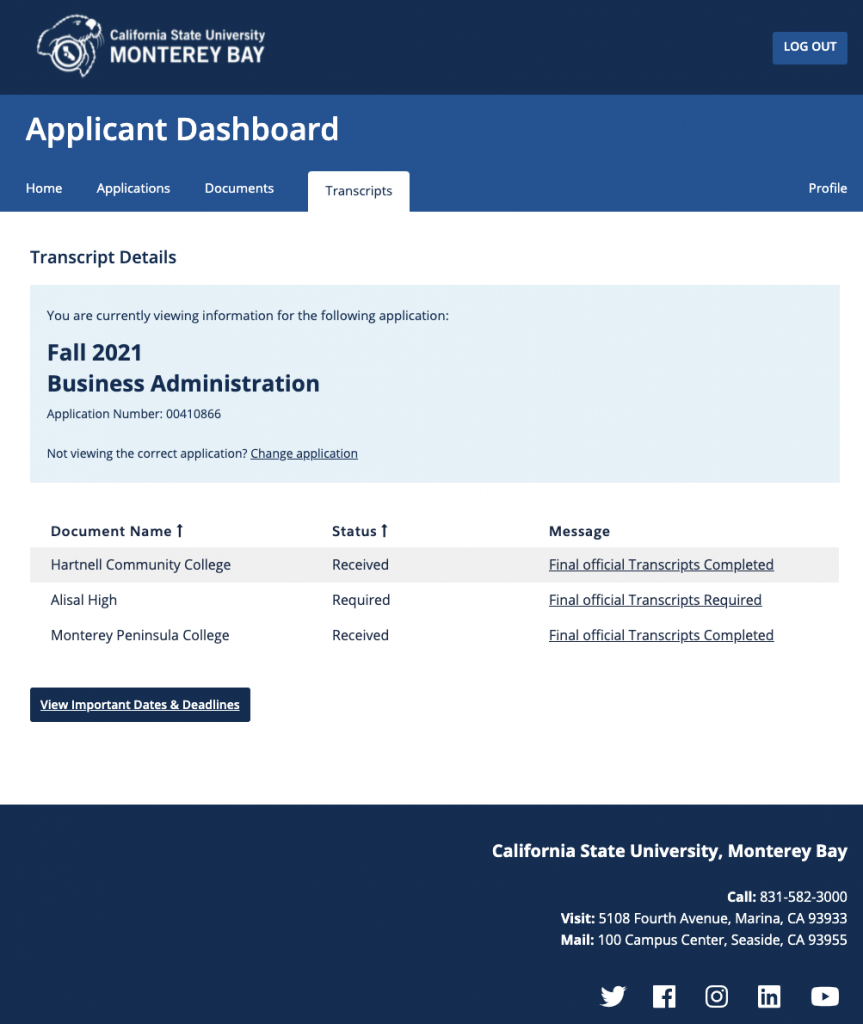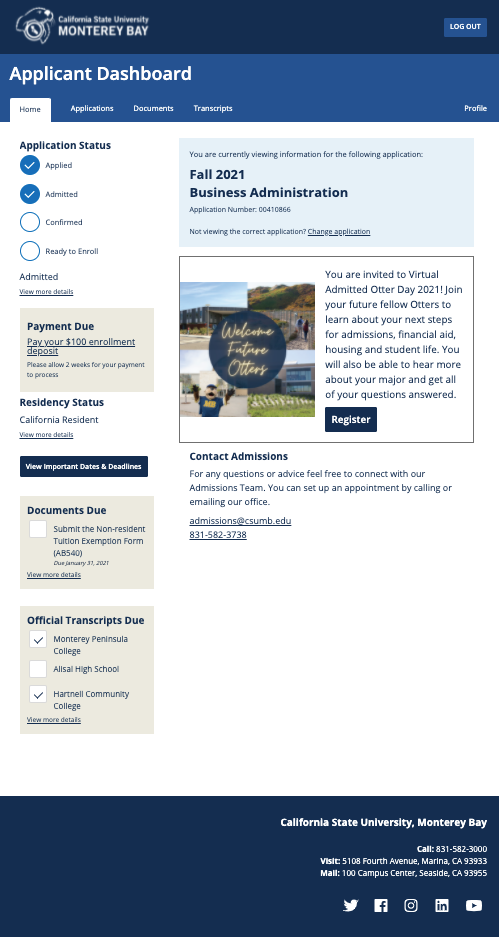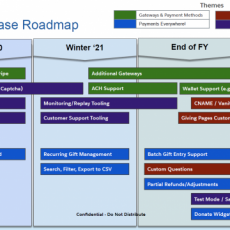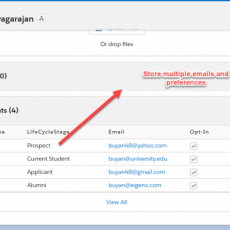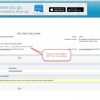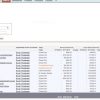Due to a decision to move California State University, Monterey Bay’s web content management system from Drupal to TerminalFour, a new solution for our applicant dashboard was needed as it would not be supported by the new content management system. CSUMB was already using Salesforce to communicate to prospective applicants using Pardot with the goal of communicating to applicants and eventually students. This made the decision to use Experience Cloud to host the new applicant portal an obvious choice. For this, CSUMB chose to work with EnrollmentRX to develop a solution. Even with a vendor selected, we still had several hurdles to deal with when it came to data integration, custom messaging for applicants and SSO user provisioning for the new dashboard.
Our first step was getting the applicant data needed into Salesforce in order to display current information to the applicant on the dashboard. Our campus uses Boomi as its integration tool and we were lucky enough to be able to leverage previous work from previous iterations of this project for this. We tried to stay as close to the standard EDA model as much as possible but there were a few places where we used EnrollmentRx objects such as the application. This is currently a one-way, read-only integration from Peoplesoft to Salesforce.
The previous implementation of our applicant dashboard was a Node.js application that had robust custom messaging driven from integration with Google Sheets and Peoplesoft. Our admissions department did not want to lose this functionality so we came up with a custom solution using a custom object to store the messages and Flows that would update messages application based on various status fields which reside on the application object. These Flows update messages that include next steps and helpful tips for application status, residency status, checklists, and transcripts. The below screenshot is an example of a flow which we built to track applicant messages.
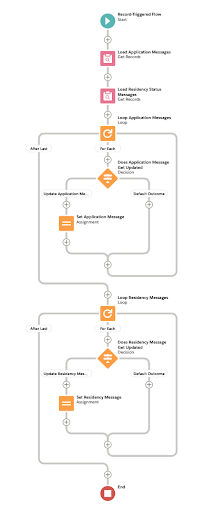
While working with EnrollmentRx was a largely painless process, there was one unexpected hurdle we had to clear on our own. Near the end of the project, we discovered we could not use the standard SAML just in time (JIT) provisioning handler and would have to write our own because we have a different email address set for contacts in Salesforce than we use for our SSO provider. Luckily this wasn’t very difficult as Salesforce provides an interface to develop from but it did cause us to have to do additional development and testing during crunch time. Below is an example of screen shots for the applicant dashboard which we built for our applicant portal.
Having gone live with our new applicant dashboard, we can look back on some of the lessons we learned along the way. While working with EnrollmentRx got us up and running faster than if we developed in-house, we realized we may have lost flexibility by going with a managed package solution. Salesforce.org had just released the Application object before our implementation so we ended up having to use ERx’s custom application object instead of the new EDA standard object. This may limit our ability to use other standard EDA features down the road. As mentioned earlier, we made a mistake in waiting to implement SSO until the end of the project and hit some unexpected roadblocks. Such a high-value feature should have been implemented earlier in the project. According to Jim Highsmith in his book “Agile Project Management” there is a high rate of failure for CRM projects that use plan-driven project management styles such as Waterfall. This is something we experienced as well. We had to restart this project twice because we were learning Salesforce as we were trying to implement it and could not meet the rigid Waterfall timelines. Only when we switched to a more Agilesque approach which gave us more room for discovery did we find success.
To summarize, here are the top 3 key takeaways when you plan to build an applicant portal in Salesforce for your students.
- Plan ahead to do a single sign-on implementation that will bite you later with a huge delay.
- Build point and click solutions using flows to display customizations around managed packages to suit your needs.
- Leverage the Agile process to build your projects instead of the waterfall so that you can easily adapt during your process.
Feel free to post your questions below or you are welcome to email me at buyan@eigenx.com where I can get your questions answered from Chris or me.
Please subscribe
Subscribe to our mailing list and get tips to maximize salesforce to your email inbox.
I am honored to have your subscription. Stay tuned for tips to maximize your salesforce investment
Something went wrong.
